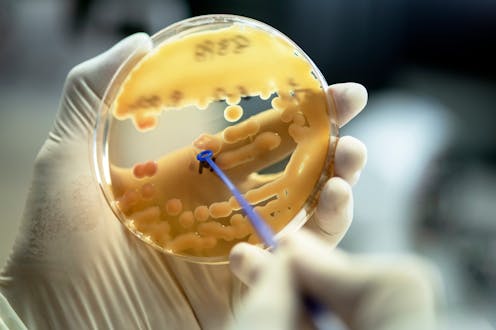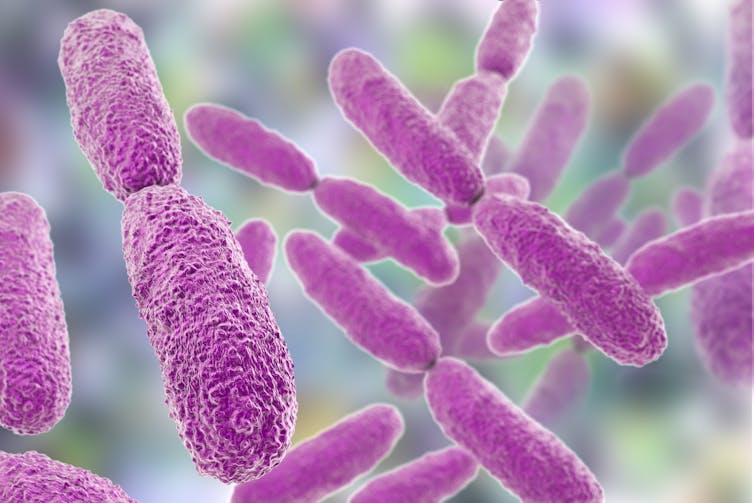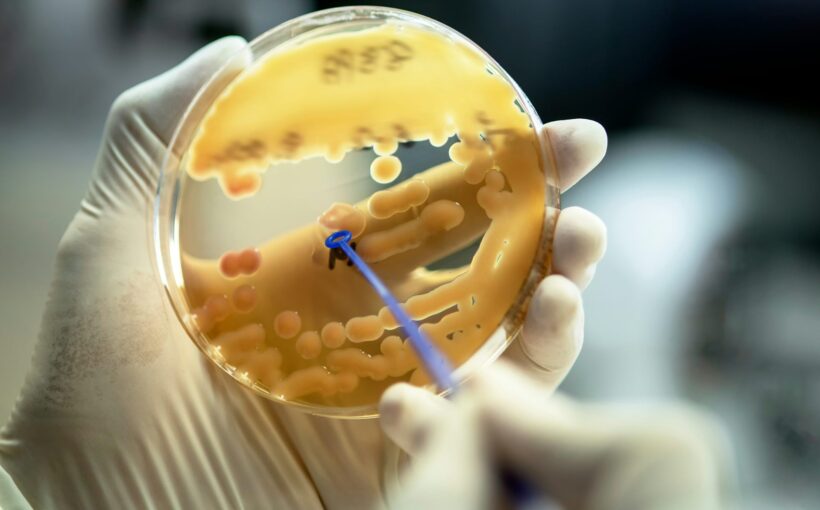
Klebsiella pneumoniae is a common species of bacteria found in our bodies – and may even be lurking in your gut, mouth or nose right now. But it’s also a notoriously harmful bacteria that can make us very ill.
It’s the most common cause of hospital-acquired pneumonia in the US and the second most frequent cause of urinary tract infections worldwide, after Escherichia coli (E coli). If it infects wounds or enters the bloodstream, K pneumoniae can cause bloodstream infections and sepsis.
So how can K pneumoniae live harmlessly among the rest of the microbiome in some of us, yet cause disease in others? Understanding this may hold the key to preventing infections.
Scientists aren’t entirely sure what proportion of the population carries K pneumoniae as part of their normal gut microbiome. Past attempts have had highly variable results.
For example, one survey of healthy people detected K pneumoniae in almost 4% of stool samples. Yet other studies show K pneumoniae is noticeably more common among certain groups – including hospital patients, people living in lower income countries and, in particular, among people who had travelled to Asia.
K pneumoniae is what’s known as an opportunistic pathogen. This means that when carried in the gut, nose or mouth as part of the normal microbiota, K pneumoniae should not cause any health problems unless a person’s immune system becomes compromised due to an infection or disease. So our microbiome can act as a reservoir of K pneumoniae, from which it can spread to other parts of the body and cause infection.
One study of 498 intensive care patients at a hospital in Australia found that half of K pneumoniae infections were caused by the patient’s own K pneumoniae strain that had already been living in their gut or throat.
It’s thought that K pneumoniae can spread from the gut to other parts of the body via medical devices such as ventilators. This type of gut-to-lung translocation has recently been observed in other pneumonia-causing species of bacteria, such as Pseudomonas aeruginosa. Surgeries can also make possible the spread of K pneumoniae to sites where it can cause infection.
Stopping the spread
Unfortunately, some K pneumoniae strains have developed high levels of drug resistance. This means that some drugs once used to treat K pneumoniae infections now no longer work.

It’s particularly concerning that some strains of K pneumoniae are developing resistance to the group of antibiotics called carbapenems, which are generally only used as a last resort treatment when other antibiotics haven’t worked. And, this resistance is becoming more widespread among the population.
There’s an urgent need to develop alternatives to antibiotics so that cases of drug-resistant K pneumoniae can be prevented or treated. Our laboratory’s research focuses on harnessing the gut microbiome as a potential solution.
Since carrying K pneumoniae in the gut is a known risk factor for subsequent infection, one route to avoiding this could be to manipulate the microbiome. This could be done by using probiotics containing beneficial species of bacteria to limit K pneumoniae in the gut. Such a solution could be especially important for people in hospitals or care homes, where K pneumoniae is more prevalent and infection risk is highest.
The microbiome has long been known to provide a host with a degree of natural protection against infection via a property known as colonisation resistance. This is when resident gut bacteria outcompete incoming species, including potential pathogens, and prevent them from establishing in the gut.
But microbiomes vary greatly – and some people carry more protective microbial communities than others.
Read more: Diverse gut microbiomes give better protection against harmful bugs – now we know why
My colleagues and I wanted to understand why some gut communities can resist the growth of harmful bacteria while others cannot. In the lab, we combined human gut bacteria into communities containing different diversities and compositions of bacterial species. We then challenged these communities with K pneumoniae (as well as other harmful bacteria, such as Salmonella).
We found that diverse gut microbiomes were more protective against K pneumoniae colonisation. We showed that this protection was due to the resident gut bacteria using up the nutrients needed in order for invading microbes to grow. This led us to develop a way of predicting combinations of gut bacteria that can resist growth of unwanted species of bacteria such as K pneumoniae.
We are still only just beginning to understand the role that microbes play when it comes to our health. Some of these microbes, such as K pneumoniae, can even be harmful and harmless at the same time. Studying the interactions between the members of the gut microbiota is a critical area of research for microbiome scientists because it could lead to new ways of preventing or treating infections.
This article is part of Meet Your Gut Microbes, a series about the rich constellation of bacteria, viruses, archaea and fungi that live in people’s digestive tracts. Scientists are increasingly realising their importance in shaping our health – both physical and mental. Each week we will look at a different microbe and bring you the most up-to-date research on them.
![]()
Frances Spragge receives funding from The Wellcome Trust.



